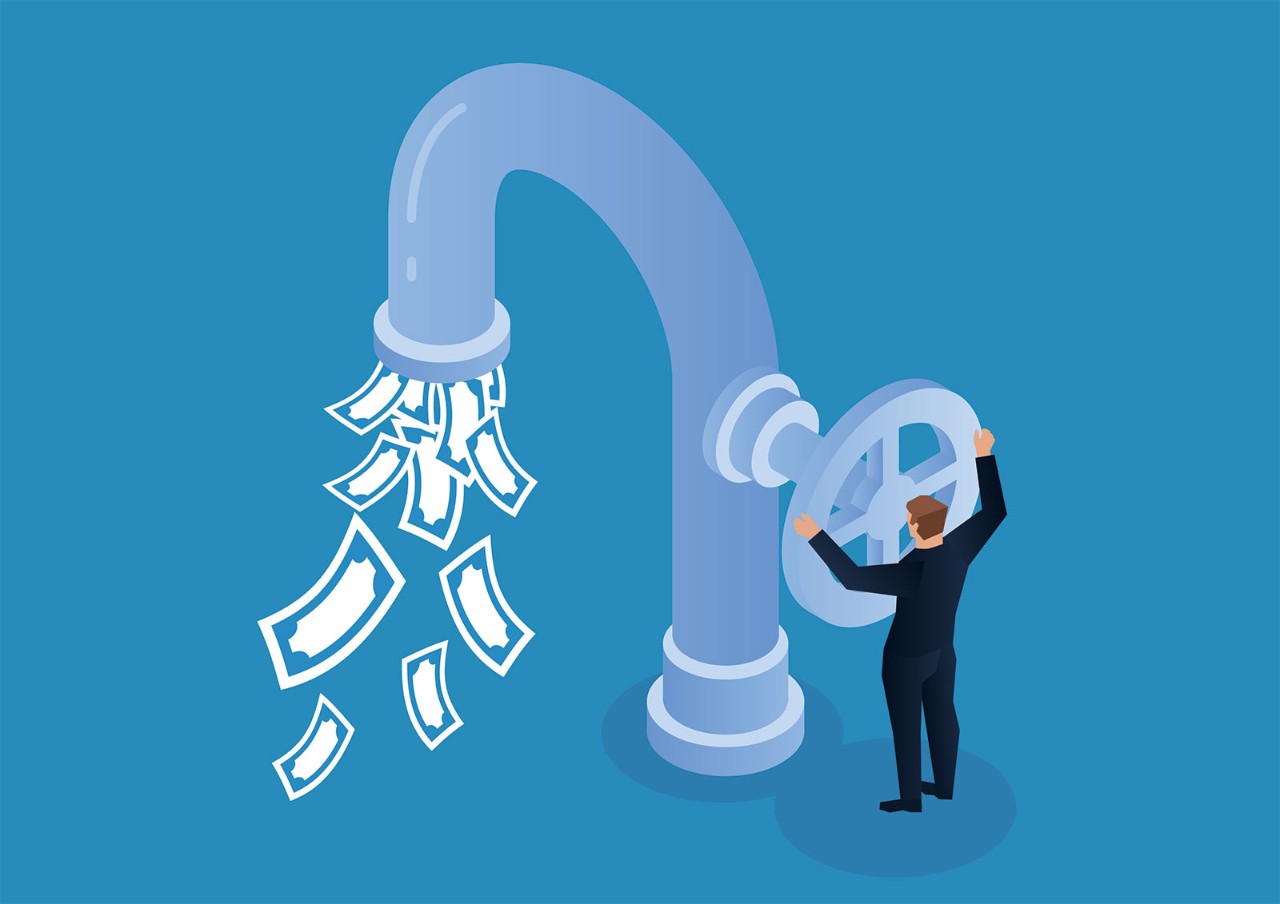
Cashflow is tight for the vast majority of startups – or if not now, it is likely to be at some point in the future. It can also be a major concern for profitable and growing businesses, which often find themselves with a working capital squeeze.
It’s important for CEOs in early stage companies – and their part-time FDs or other professional advisers – to understand the cash position while still dealing with everything else that needs their attention. They always have to have one eye on the clock, so workflows need to be quick and agile.
Fortunately there’s a chart for that. As charts go, a rolling cashflow tracker might not be the most spectacular – it is just one line. But it shows the projected bank position by day over the next 60 days, and that is what CEOs love. It brings them peace of mind and helps them focus on making things happen by a certain date and often in a particular order.
I love the chart too because it engages CEO clients in two ways – in their cash position and in our working relationship.
Cash stress
When I first started working as a part-time FD 10 years ago, a new client had a short-term but urgent cash pinch – some sales invoices hadn’t been paid on time and there wasn’t enough in the bank to cover payroll. From my side, it was difficult to step in at the 11th hour and provide a quick solution. It would have been a lot easier to have had some advance warning. And this is what inspired my cashflow tracker.
When a CEO manages their cashflow by just checking their bank balance, there is little or no time for anybody to react to or remedy a sudden cashflow emergency. While some CEOs are possibly fatigued by the warnings about cash being king, the short-term cash position still remains a stress point for many.
However, with some processes, dovetailed workflows and alarms, CEOs can quickly feel in control, and have clarity on what actions they need to take. Condensing payment runs to one or two per month lightens the admin. A fortnightly review of overdue debts being chased up brings money in faster. Other remedies can speed up the revenue cycle, slow down the payment cycle and reduce capital tied up in stock and production.
Cementing relationships
As a finance professional, you want to engage with your client base. The sweet spot is where you combine numbers, context and advice. It can be weekly, fortnightly or a monthly 30-minute call. A rolling cashflow tracker gives advanced visibility and warnings. Refreshing it every 15 days ensures there are three updates before the 60th day is reached.
Planning is not always easy. Encouraging CEOs to look forward and plan ahead is not something that comes naturally to all accountants, who mostly hone their expertise on reporting last month, last quarter, last year’s actuals. Being able to project the future isn’t always easy but it is a constant need.
When a CEO manages their cashflow by just checking their bank balance, there is little or no time for anybody to react to or remedy a sudden cashflow emergency
Further information
Watch this video for advice to practitioners on developing a sales mindset
Cashflow forecasting can also cement relationships with other important stakeholders. I once closed an emergency bridge loan with five investors in different parts of the world who could all see my screen and agreed the loan to bridge a 90-day funding gap when an investment round had been delayed.
Cashflow forecasting isn’t all about apps. In the wrong hands, apps and Excel spreadsheets are simply garbage in, garbage out. A robust forecast process often needs someone to provide context, act as a sounding board or make decisions.
With any simple chart or output, the CEO also needs to be confident with the detail that sits behind it without having to audit or remember it all. They also want to know that there are adequate controls in place, that the business operates efficiently and that any actions are followed up.
CEOs I’ve worked with through their early days and whose businesses now have a much healthier bank balance still want the fortnightly reassurance that cashflow is OK. Relationship-wise, we never miss a call and are still working together.
Ongoing process
Cashflow forecasting is a continuous process. As are client relationships. It is important for CEOs to get into the habit of owning their cashflow. It can help ensure their business doesn’t experience a sudden or fatal shock that could have been resolved or avoided if they had simply had more notice.
In parallel, cashflow forecasting is a skillset that encourages accountancy professionals not just to plan ahead but to engage with their clients to build stronger and longer relationships.





